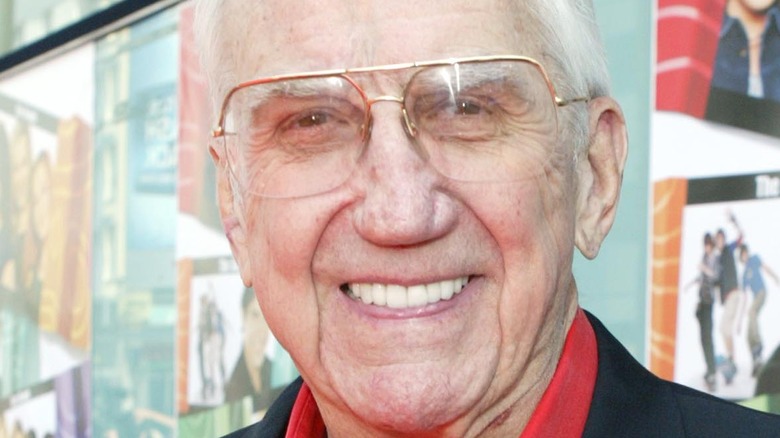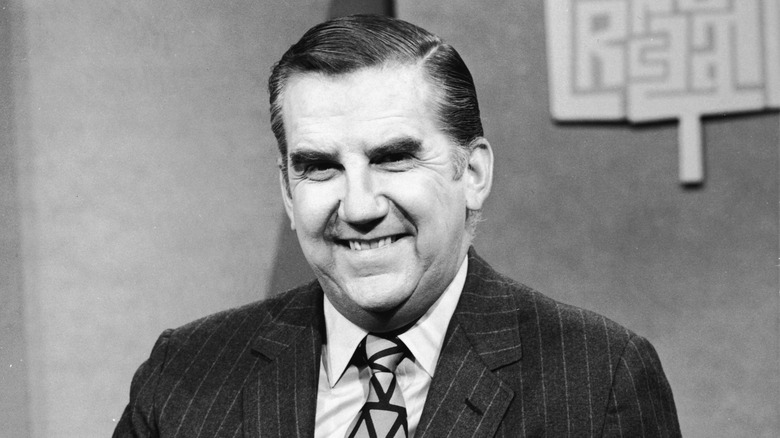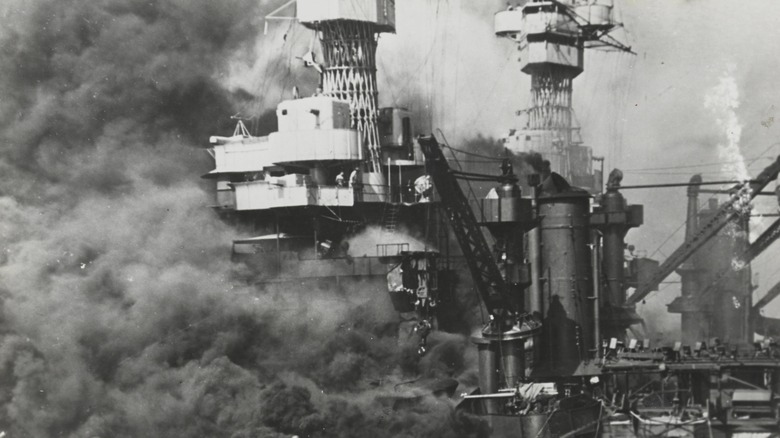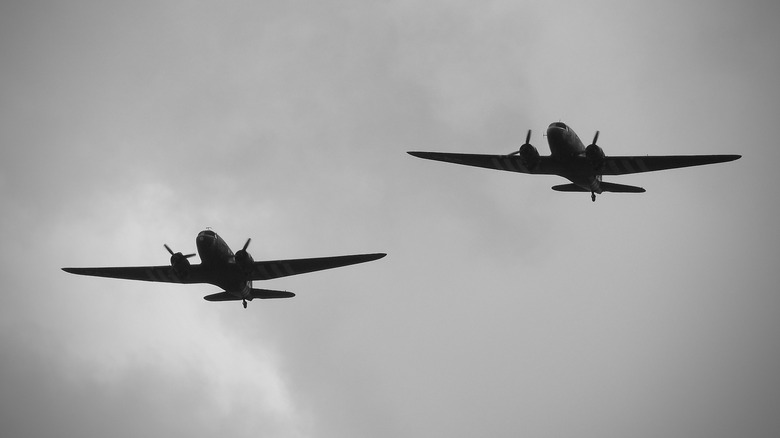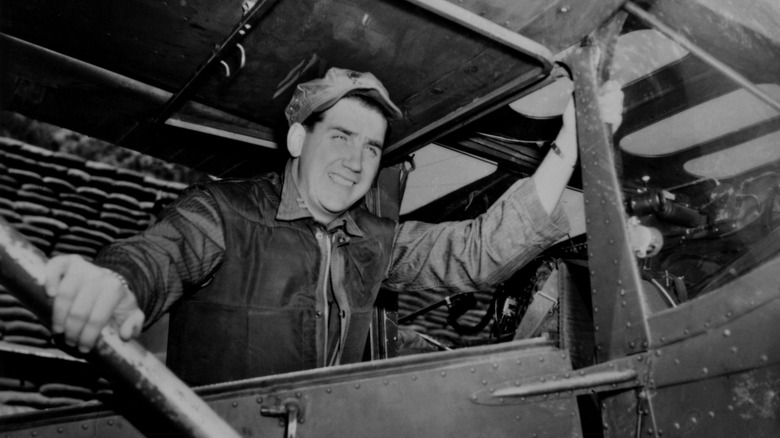The True Story Of Ed McMahon's WWII Military Service
Ed McMahon may have spent decades playing second fiddle to Johnny Carson on "The Tonight Show," but by no standard was he a second-tier entertainer. Both because of his co-hosting duties with Carson and in his lengthy career doing other projects — including hosting "Star Search" and being the spokesperson for American Family Publishers sweepstakes — McMahon was honored with a star on the Hollywood Walk of Fame, as well as having been posthumously inducted into the Broadcast Pioneers of Philadelphia Hall of Fame.
Like a lot of men of his generation (he was born in 1923), McMahon served in the military in World War II as a U.S. Marine Corps pilot and again during the Korean War, also as a pilot. Oddly enough, one of the tools that helped him in both his television career and his earlier military career was his voice: His loud, booming voice was commanding and, as such, was tailor-made for a career in uniform, according to Military.com. He retired in 1966, having achieved the rank of colonel.
His Voice Paved The Way
In a way, Ed McMahon's childhood and adolescence prepared him at once for both careers in the military and in television. As The A.V. Club reports, his voice was his ticket to whatever vocation he chose in which it would be an asset. Indeed, as a teenager and young man, he earned a few bucks with his voice, working at various times as a carnival barker and a bingo caller, among other jobs.
Even before World War II, McMahon was keen to join the service as a pilot, according to Military.com. And though there are multiple character traits that are required for a career in the military — physical fitness and respect for authority, for example — having a good voice is also a bonus as it helps for giving commands, instructing subordinates, etc. It was certainly an asset for McMahon: "His booming, resonant voice became the centerpiece of his career as an entertainer and would serve him as a Marine," the website notes. McMahon, specifically, would make use of his voice in his military career, as for much of it, he served as a flight instructor. However, it would take a specific series of events to get his military career off the ground.
Pearl Harbor Changes Everything
After finishing high school, Ed McMahon wanted to pursue his dream of becoming a Marine Corps fighter pilot (via Military.com). However, at the time, the Marines required would-be fighter pilots to have two years of college before enrolling in flight school, so McMahon enrolled at Boston College, presumably with a view toward enlisting once he earned his credits.
Of course, December 7, 1941 — "a date which will live in infamy," as Franklin D. Roosevelt said — caused all sections of the military to rethink their recruitment standards, now that the need for warm bodies in various roles was immediate and acute. The Marines dropped the college requirements for fighter pilots, and McMahon joined the Marines and wound up in Dallas for flight training and later in Pensacola. However, this is where his voice would come in: During flight school, he was promoted to instructor, "a role in which his ability to project came in handy," as Military.com describes it.
McMahon's World War II Service
The Department of Defense provides a slightly different account of Ed McMahon's World War II service than does Military.com. For example, the latter source says that the Marines dropped the college requirement for pilots after Pearl Harbor, while the former source says McMahon didn't get his wings — which is to say, become authorized to fly aircraft — and his officer's commission until 1944, a solid couple of years after the Pearl Harbor attacks.
Nevertheless, what's certain is that the early part of McMahon's WWII service was spent as a flight instructor and not an actual combat pilot. However, at some point in 1945, he was given his orders to report to the Pacific fleet for combat. McMahon never actually made it to combat, however, as the U.S. dropped atomic bombs on Hiroshima and Nagasaki, ending the war before he flew a single mission (according to Military.com).
In an interesting tidbit in television history, the man to whom McMahon would play second fiddle for the entirety of his decades-long career — Johnny Carson — also served in World War II. However, the two men were in different units (Carson was in the Navy) and were likely nowhere near each other at any point in the war.
McMahon's Korea and Vietnam Service
After World War II ended, Ed McMahon did what tens of thousands of other servicemen and women did and re-entered civilian life, although he also remained in the Marine Corps Reserve during this time (via the Department of Defense). He re-entered college, this time enrolling at the Catholic University of America, earning a degree in drama in 1949 (per Archdiocese of Baltimore).
By remaining in the Marine Corps Reserve, he consented to be called back into service at any time. And when the Korean War came calling in the early 1960s, McMahon was brought back into service. This time, he actually flew missions in a combat zone, according to Military.com. Specifically, he flew Cessna O-1 Bird Dogs on surveillance missions for bombers. He flew 85 missions during the conflict, for which he received six medals.
McMahon retired in 1966 when the U.S. was getting involved in the Vietnam War. He was never actually put into duty during that conflict, although he was still in the service for at least part of the conflict. As such, according to the Department of Defense, McMahon served during three wars.
